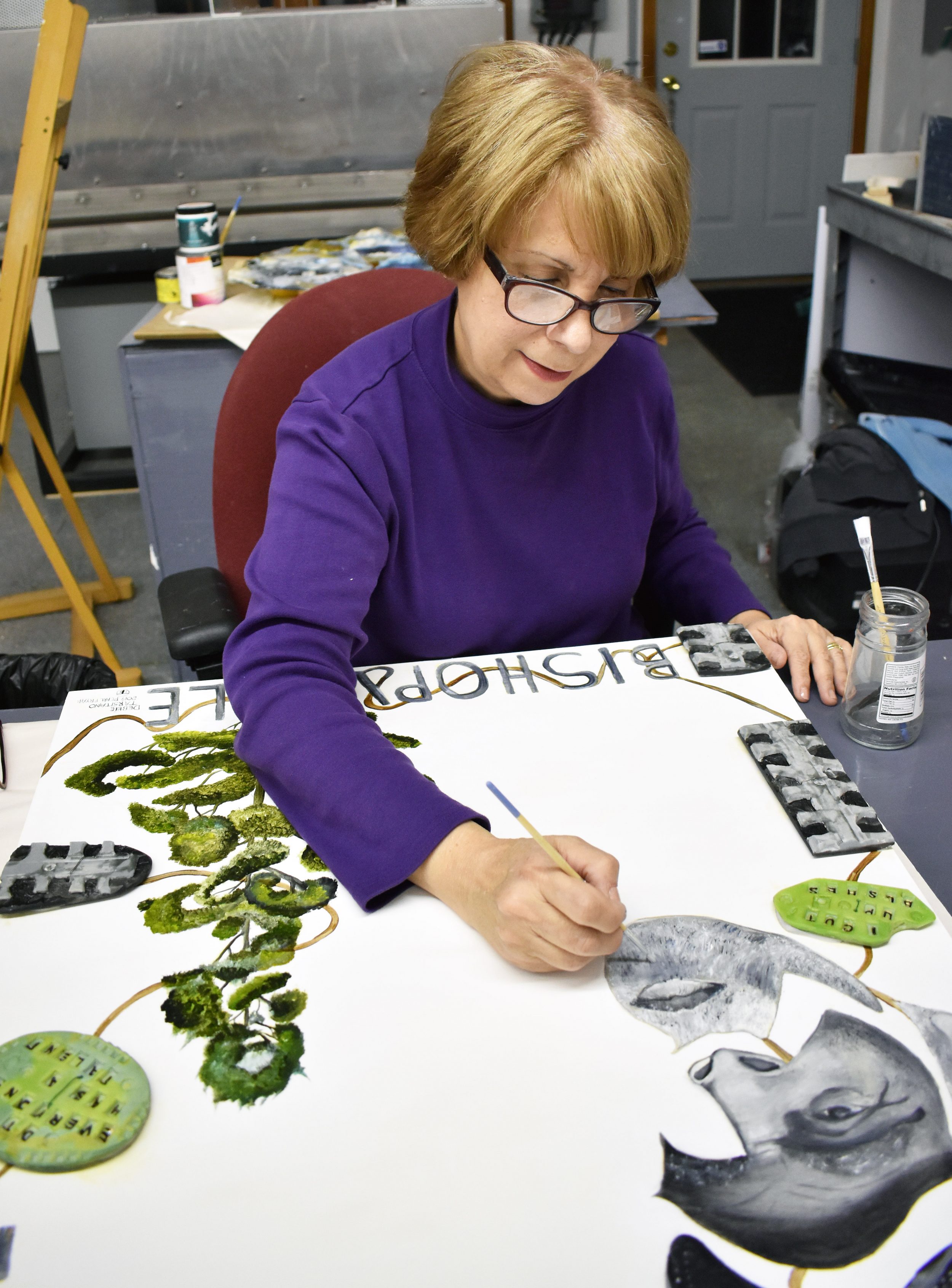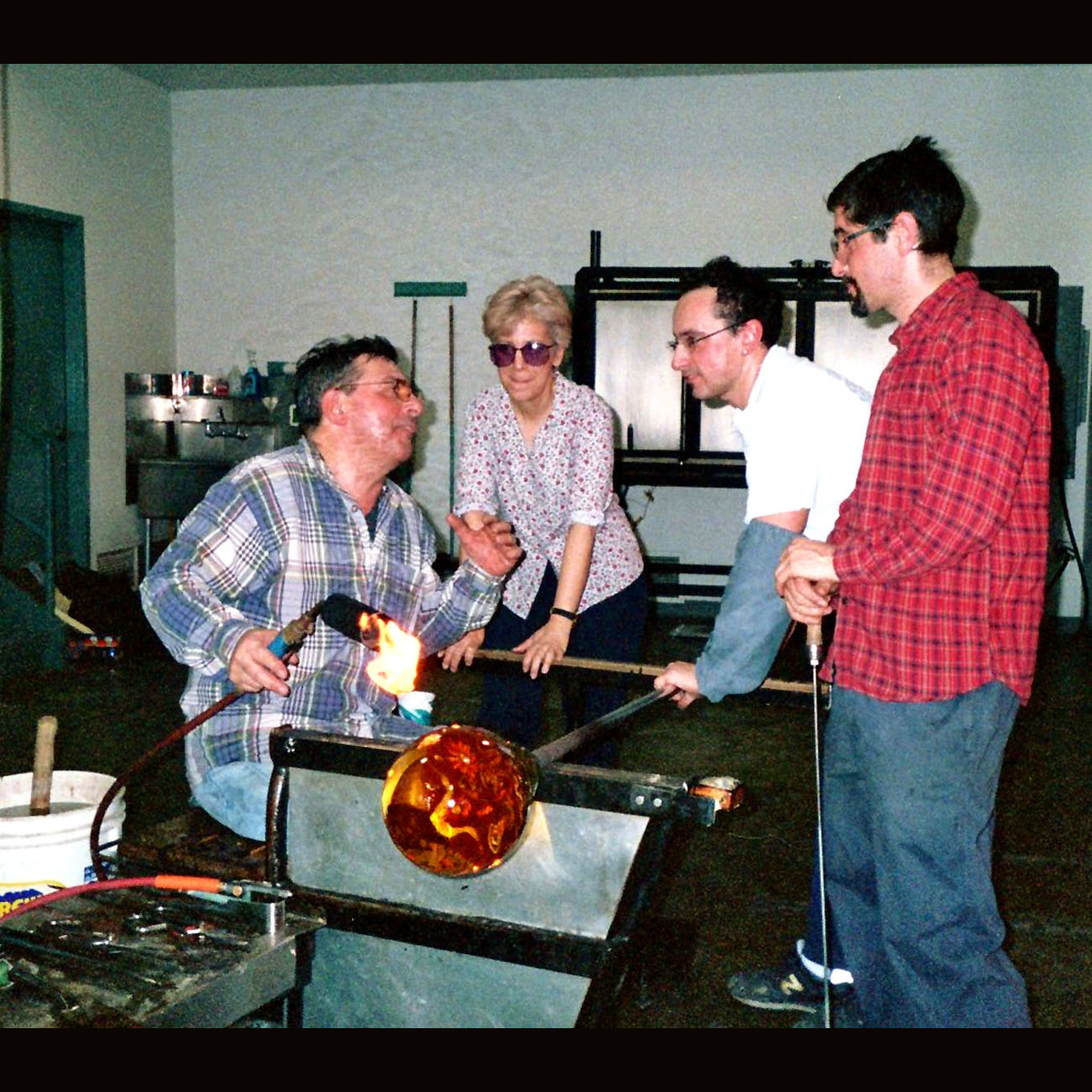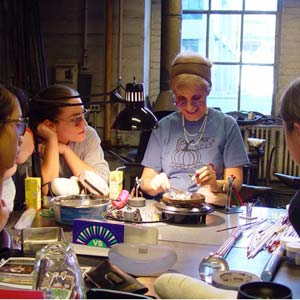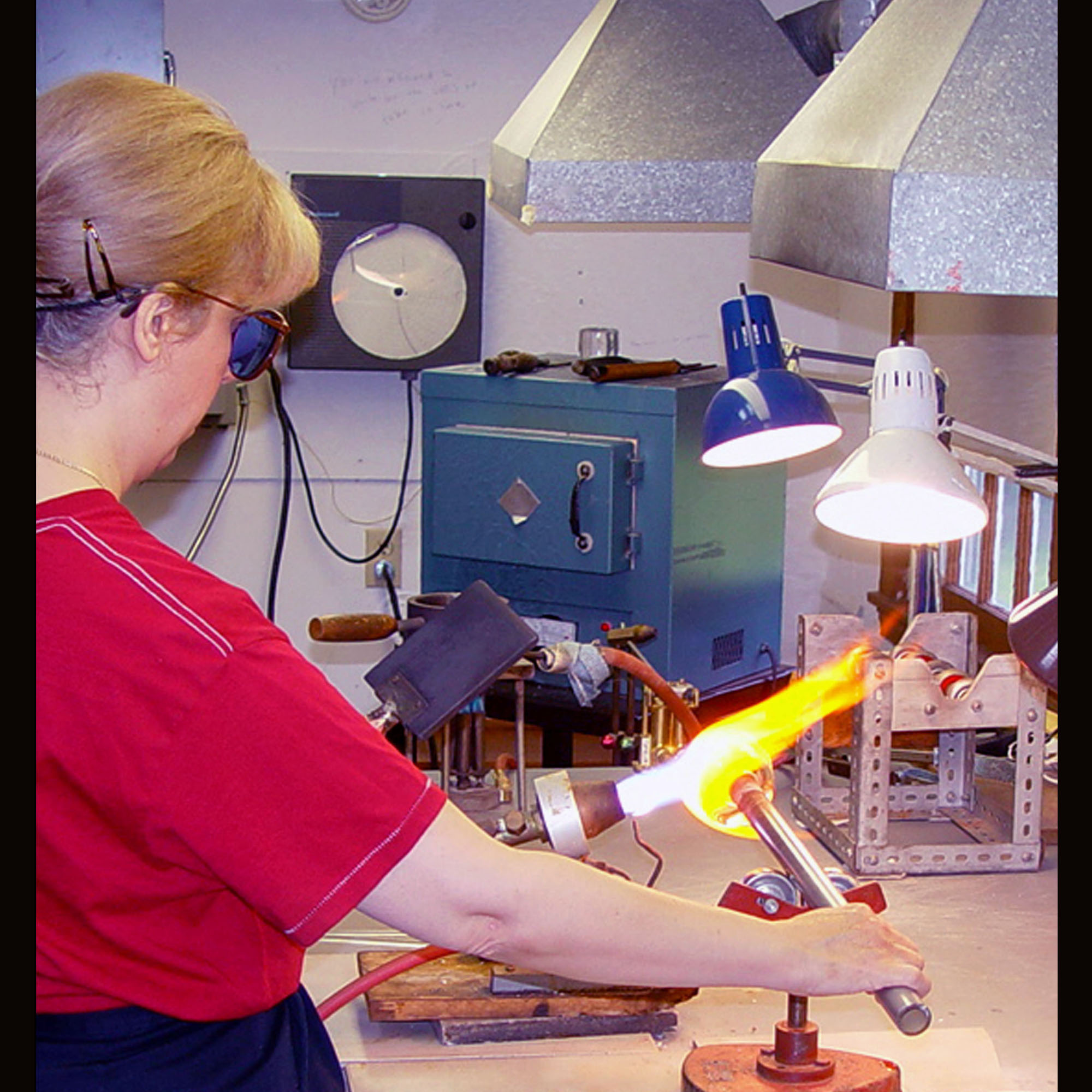Debbie Tarsitano is a pioneer, innovator and designer in the field of art glass since 1976.
Her passions lie in creating work that goes beyond traditional glass, building a bridge to the greater world of art. She uses the many materials she mastered over 40 years of experimentation defining events of our time. Hidden clues are throughout the artworks, give the viewer an experience of wonder and excitement as they discover truths within the works of art.
A formally trained painter, Tarsitano bridges this gap by creating collages, a combination of photography, cast glass,found objects and oil painting on cradle frame wood board. Some housed in shadow boxes. Her work informs the viewer of the invisible link between human emotions, events and current events. .She defines herself as a Multidisciplinary Artist.
Debbie Tarsitano was born in Valley Stream, Long Island, New York, in 1955, to a family with keen interests in the arts and collecting. In the 1960’s, Debbie started private instruction in painting, drawing, and watercolor. At age 11, she participated in her first public art show, selling a painting. She attended auctions with her father, Delmo, discovering art glass. Inquisitive in nature, an auto-didact, Tarsitano felt an immediate sense of wonder and a desire to learn more.
Glass was a shared obsession with her father. In 1972 they purchased their first flameworking torch, working on a card table in their garage. In 1976, Debbie and Delmo launched Tarsitano Studio, each pursuing their own individual one-of-a-kind artworks. Self-taught, the two frequently visited New York’s Sotheby’s and Christies, studying art glass first hand. While developing her glass artwork, Debbie earned a Bachelor of Fine Arts, and an Associate’s Degree in Journalism from Hofstra University, Long Island, New York.
A chance meeting in the 1970’s with Roland (Max) Erlacher, master engraver from Steuben, led to a 25-year relationship designing engravings and combining them with encased flamework. Wildly popular, these painterly works told stories in glass and sold all over the world. Tarsitano and Erlacher created portraits and scenes depicting Anne Frank, Mother Theresa, and multiple ambitious works including “The Outstretched Hand of Liberty,” the story of American immigration through Ellis Island, New York.
In the 1980’s Debbie broke from tradition, sculpting hot glass in abstract shapes. She created dimensional, multilevel artworks using molten crystal. Working with Edward Poore, master glass cutter, Tarsitano introduced optical effects enlivening the work, changing perception for the viewer. Throughout the 1980’s, Debbie continued to tell stories in glass, bridging the gap between glass and painting, two of her greatest loves.
After Delmo Tarsitano’s death in 1991, Debbie forged a new path alone, meeting the many challenges of starting over. That year she joined the artistic community in The Studio at the Corning Museum of Glass. Relationships there transformed Tarsitano’s thinking and expanded her technical knowledge. Today she is a popular guest instructor in The Studio. Armed with new insights, Debbie pushed the limits of glass, creating more and more intricate painterly works. Henry Halem, a famous professor and technical advisor to thousands of artists, calls Debbie “A Glass Master”, a title she earned through her advanced knowledge of glass as a material.
In 2000, Debbie invented a transformational new vocabulary for herself and her work, creating “Filament” grounds, hair thin glass fibers used to create texture, as well as millefiori canes representing biological cells. She introduced new motifs, using flameworked human portraits. Abstracted snakes slid in rivers of complex millefiori. Surrealistic scenes led to encased collages containing many elements and abstract patterns. Debbie innovated on the idea of collage, using oil paint and hot glass elements. In 2001, Debbie returned to her roots in oil painting, filling the studio with canvases and mediums from sign paint to oils. She experimented late into the night, placing painted glass pieces in the snow and rain, testing their archival nature. Debbie covered glass sculptures with painted canvas; enamel paints replaced cutting and engraving.
In “The Dream” (collection: Corning Museum of Glass), sculpted glass became a canvas. 2006 brought many significant developments; Debbie created a large canvas inspired by her favorite painting by Gauguin (collection: MFA Boston), “Where Do We Come From? What Are We? Where Are We Going?” Her work, “Who Are We? What Are We Doing? What Have We Done?”, is a combination of glass and oil paint on canvas. It depicts an exotic scene featuring a figure embodying the effects of genetic engineering. The work questions how genetics impacts our society, morals and world health.
Debbie met Venetian Maestro Dino Rosin, master of large glass sculpture, at The Studio in Corning, New York. Together they made “Lens Fantasia,” a large glass sculpture with encased flamework and a painted outer history of Debbie’s career. A friendship with artist Jiri Harcuba of the Czech Republic led to interest in “Wabi Sabi,” finding beauty in the imperfect. The concept of Wabi Sabi would remain an inspiring influence in new artworks. In 2010, Debbie studied with artists Shinichi and Kimiake Higuchi of Japan at The Studio at the Corning Museum of Glass. She envisioned cast elements as bridge elements combining painting and glass.
By 2016, a 38-year artistic career came full circle, resulting in collages using cast glass and photography on oil painted canvas covered boards. The new work depicts a wide variety of subject matter. Some are called “Snap Shots”. Tarsitano is in the process of developing yet another new path, translating her photographs into cast glass and paintings. These ideas developed from her many years as a photographer and her journalism background.
Today in 2023, after 13 years of isolation conducting extensive research, trial and error, and development, Debbie Tarsitano continues creating breakthroughs influenced by her photographs of real life and experiences we all share. She continues to combine cast glass and oil painting, using glass as an expressive element, reinventing oil painting to be seen in a new light. The hope: to make work that creates a meaningful experience for everyone viewing it and leaving a record for the future of who we are now. “As human beings, each of us develops alongside our experiences. Surprisingly one way or another, we all have experiences in common, we are not so different”. If I can place that commonality into the work we all can share it and hopefully be better for it” says Debbie Tarsitano. The experimentation continues today in her Westford, Massachusetts studio.





